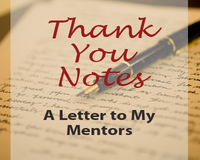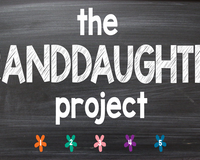Portion Control Plus Learning Preferences Equals a Well-Balanced Staff
 Onboarding is the action or process of integrating a new employee into an organization or familiarizing a new customer or client with one's products or services. From the initial welcome to the human resources paperwork to general understanding of the job and the expectations ramp up, onboarding covers a wide range of topics and seemingly endless amounts of information. It’s imperative to create an onboarding system that allows for the different dietary preferences new employees have for information and change. Some will be eager to head straight to the buffet and take in as much as they can. Others will do better with a more portioned diet of new information so they can digest it more effectively. And then, of course, there’s everything in between which brings us back to flexibility.
Onboarding is the action or process of integrating a new employee into an organization or familiarizing a new customer or client with one's products or services. From the initial welcome to the human resources paperwork to general understanding of the job and the expectations ramp up, onboarding covers a wide range of topics and seemingly endless amounts of information. It’s imperative to create an onboarding system that allows for the different dietary preferences new employees have for information and change. Some will be eager to head straight to the buffet and take in as much as they can. Others will do better with a more portioned diet of new information so they can digest it more effectively. And then, of course, there’s everything in between which brings us back to flexibility.
I’ve actually had a couple of tremendous onboarding experiences that varied in scope and style, but set me on a path to success. The first was when I entered the Air Force Academy. We had a ‘sponsor’ family that adopted us when we were doolies (freshmen). They opened up their homes, tables, washing machines, and hearts so that we could have a respite during our tedious and trying first year. They became our surrogate parents.
The second onboarding experience I had was when I transferred overseas as an officer in the Air Force. I also had a ‘sponsor’ which was an officer already in-country who had done a great deal of legwork to ensure I had a seamless integration. This included checking into potential off-base housing, picking me up at the airport, making me stay up all day so I could adjust to the time difference as quickly as possible, and so much more.
When I entered private industry, I went to work for a huge semi-conductor manufacturing firm. It was the high-tech heydays, and they were hiring like crazy. We had several weeks of training and indoctrination before we even moved to our workstations. We also had a ‘sponsor’ who worked alongside us answering our questions. This person was different than our manager and ensured the myriad of newbie questions were answered at the lowest possible level.
This type of onboarding ensured that personal, as well as professional, needs were met the minute we got our employee IDs or badges. How quickly and efficiently you onboard your employees speaks volumes to them. I once went six months at an organization before I had an official email or business card. They weren’t bad people; they just missed the opportunity to integrate me fully. Always take the time to stop by your new hires and find out how things are going and listen to their responses. We don’t know what’s going through each other's heads unless we articulate it.
 Once you’ve established this rapport, keep it going. Job expectations and boundaries are completely fluid. Where we are tomorrow may be completely different than where we are today so keep those lines of communication open. And be sure that you give your employees just enough information to keep them challenged and hopeful, but not enough to scare them off. I am an experienced “drinking from the firehouse” individual. I can absorb a lot of new things in a quick amount of time. But not everyone is coded to process change like that. That doesn’t mean one is any better than the other; it just means that we have different digestive rates.
Once you’ve established this rapport, keep it going. Job expectations and boundaries are completely fluid. Where we are tomorrow may be completely different than where we are today so keep those lines of communication open. And be sure that you give your employees just enough information to keep them challenged and hopeful, but not enough to scare them off. I am an experienced “drinking from the firehouse” individual. I can absorb a lot of new things in a quick amount of time. But not everyone is coded to process change like that. That doesn’t mean one is any better than the other; it just means that we have different digestive rates.
Know how each of your employees likes their information plated and meet them where they are. This will ensure they don’t turn up their nose at the sights and smells of the new and exciting changes on the menu.










